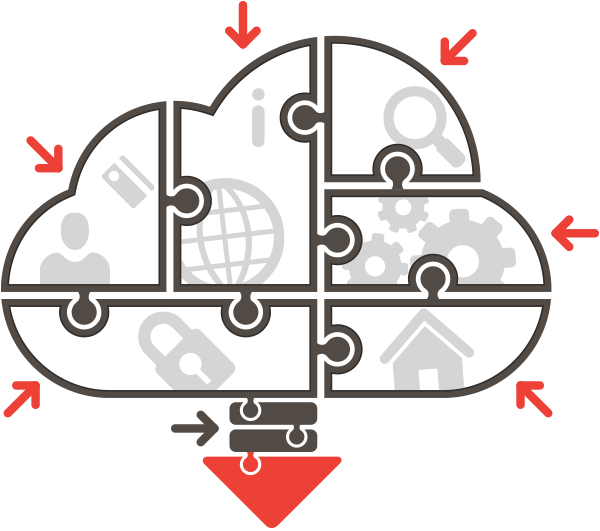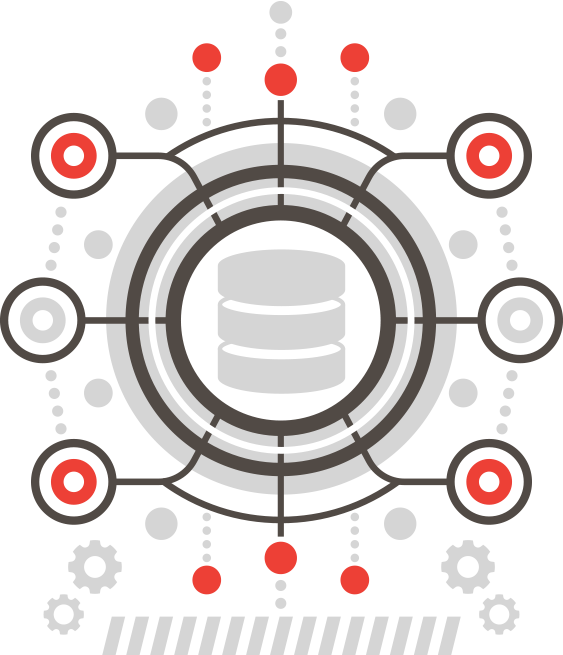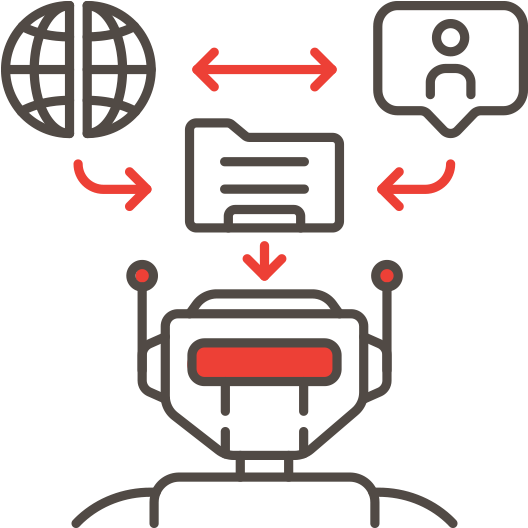5
DATA MANAGEMENT ACTIONS TO TAKE NOW
Thinking of your organization’s most recent data and analytics projects, what percentage of the total time was spent finding and preparing the data compared to the time spent extracting value through visualization, reporting, or analysis?

HOW CAN YOU REDUCE THE TIME SPENT ON FINDING AND PREPARING DATA FOR ANALYTICS, AI and ML?
THIS GUIDE GIVES YOU 5 STEPS YOU CAN TAKE NOW.
Unfortunately, most data scientists report spending around 45% of their time just on data preparation tasks. And 63% of employees report they cannot gather insights in their required time frame. Our solution can speed up this process 10X, read on to learn how…

PUT YOUR DATA IN THE CLOUD
Businesses need to make today’s decisions with an eye to the future. For too long, businesses have rolled out IT initiatives only to see their new advancement become outdated on day one. The idea of future proofing, along with the uncertainty of predicting needs for data volume and technology progression, is pushing companies to the cloud. Moving to the cloud also helps companies align their modern toolset with their approach.
HOW:
Start out small. Develop a lake in the cloud, add a few tools, test, and experiment. Make sure what you design can scale to production. Azure is great for helping you build out a small environment suitable for production – in the cloud. Adopting a cohesive data management environment helps with integration and governance challenges.
We’ll help you do that.



CONSIDER A LAYERED APPROACH
Different types of users require that data be made available for analytics and AI in different modes. For instance, data scientists typically require raw data that has not been cleansed, but data analysts and marketing teams want to work with data that has been consolidated, rationalized and cleansed. Business users of visualization tools need governed semantic models with documented data sets.
HOW:
A layered approach means creating a data lake from all your data sources and then building one or more data warehouses from the data lake. You may want to build a “Lakehouse”, which combines a warehouse data structure with data lake management features. Semantic models can be produced from either the data lake or data warehouses for self-service analytics. By using this layered approach, you ensure that everyone in your company working with analytics or AI is using the same data, in real time.

USE A META-DATA DRIVEN METHOD
A report by Gartner encourages readers to make the strategic planning assumption that “By 2022, organizations utilizing active metadata to dynamically connect, optimize and automate data integration processes will reduce time to data delivery by 30%.” Gartner says “Most organizations continue to struggle with provisioning integrated and curated data from heterogeneous data sources to data consumers, to support their data and analytics use cases.”
Translation: “Smart businesses will be able to quickly automate their data in a useful way. However, most businesses have no idea how to access all their data and get it to the right employees for actionable decisions and reporting.” The good news is that we do, and we’ll get you there.
HOW:
Writing code to extract data from operational systems is time consuming, error prone, expensive, and provides no documentation other than the code. We use meta-data driven methods that auto-generate SQL code for structured data and document where the data came from. If the data was cleansed, merged or altered in any way – that is documented too. This is great news for business, but even more useful for companies that have reporting needs for government contracts or grants.




PURSUE AUTOMATION
Companies are recognizing the benefits of data automation and moving towards automating everything that can be automated within the data life cycle. There’s a disconnect between available resources and the number of projects on IT’s plate. Add to that the fact that projects, especially data projects, are becoming more complex, and it’s clear that companies are faced with a predicament. Automation helps solve the constraint of a lack of resources.
HOW:
Make the commitment today to move your company towards automating complex, time-consuming, redundant tasks. It’s time to stop talking and start doing. Because you won’t always know in advance what you might find that could be useful, organizations don’t need to lay out a full business case and ROI calculation for building analytics and supporting infrastructure before getting started.

CONTEMPLATE COMPLIANCE
If you are not afraid of compliance issues for your data – you will be. GDPR has been in effect in the European Union since 2018, as well as ADA compliance laws in the US. Data shows many believe that 50% or more of companies based in the EU are not yet compliant. Privacy and security rules like HIPAA or PCI may impact your data depending on your industry and many expect that GDPR-like rules will be implemented around the world.
HOW:
Contemplating compliance today means being ahead of compliance law, able to document data lineage and access rules in metadata about the data you have placed in lakes and warehouses for use in analytics and AI. Because we use a layered approach, this becomes easier. Documentation will save you hundreds of worker hours and thousands in possible non compliance fines. Future proofing saves you time and money.

HOW CAN WE HELP?
As TimeXtender Partners, we use software proven to accelerate time to insights by to 10x. Our solution is everything you need to connect to various data silos, catalog, model, move, and document data for analytics and AI. We’ll set it up and manage it for you or we can train your current IT staff to manage it themselves, saving them hours retrieving and analyzing data.
Partner with us and YOU’LL BE ABLE TO:

Gather data in raw form and structure for use in advanced analytics and AI
Create a modern data warehouse with access to data that is improved, enriched and consolidated
Build semantic models for self-service analytics (get the data you want, the way you want it)
… ALL IN ONE PLACE.

